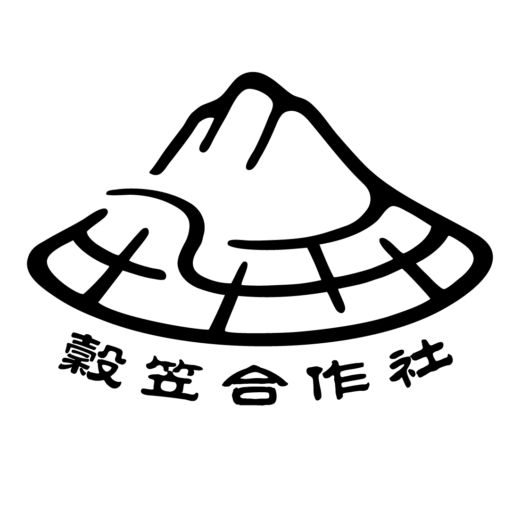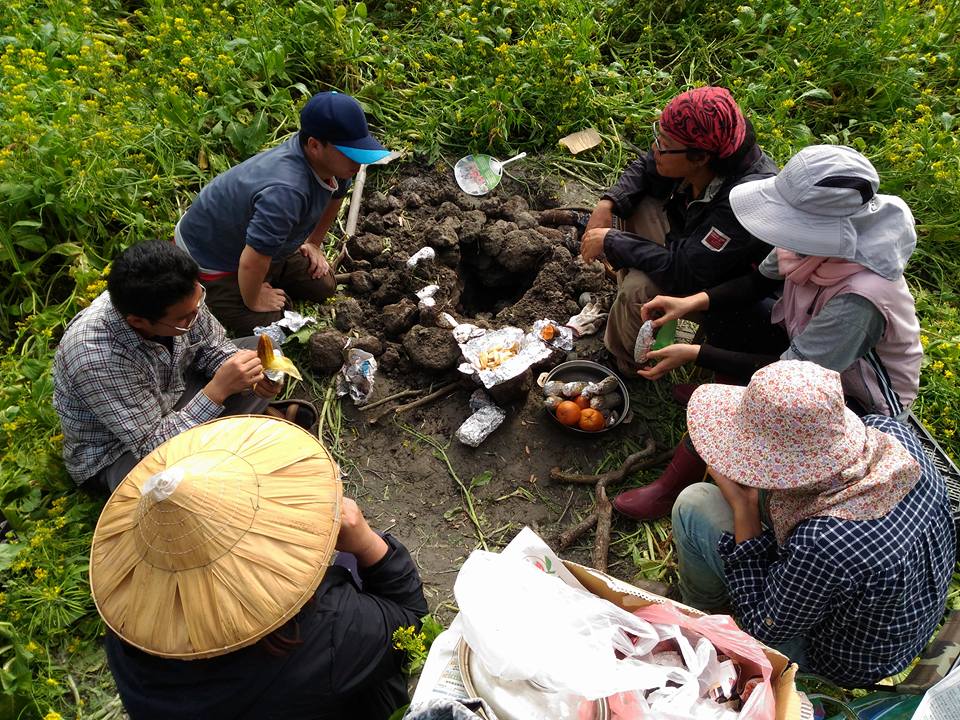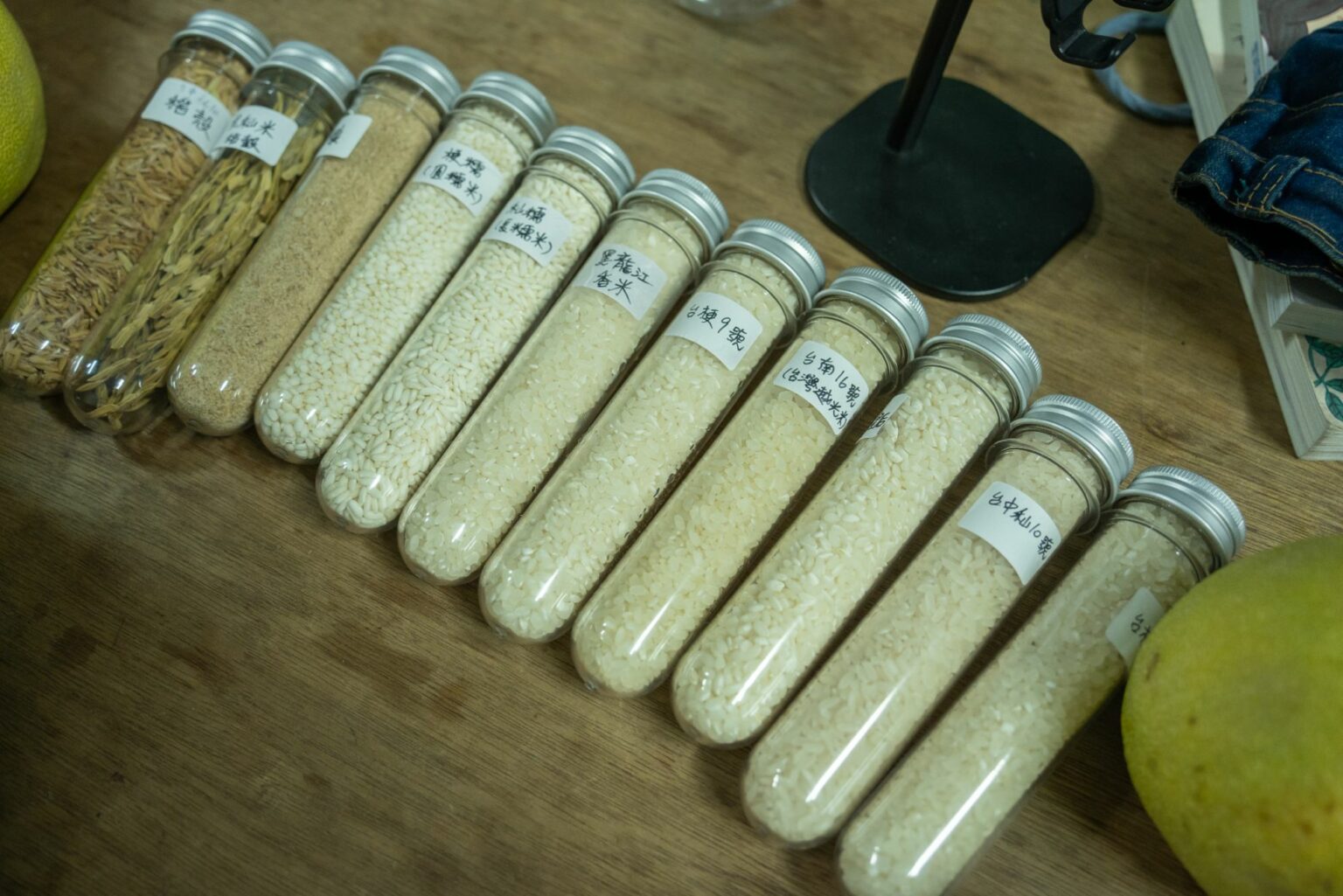
【米雙語食農教育】水稻種植流程:育苗、打田、插秧、田間管理、曬田、收成
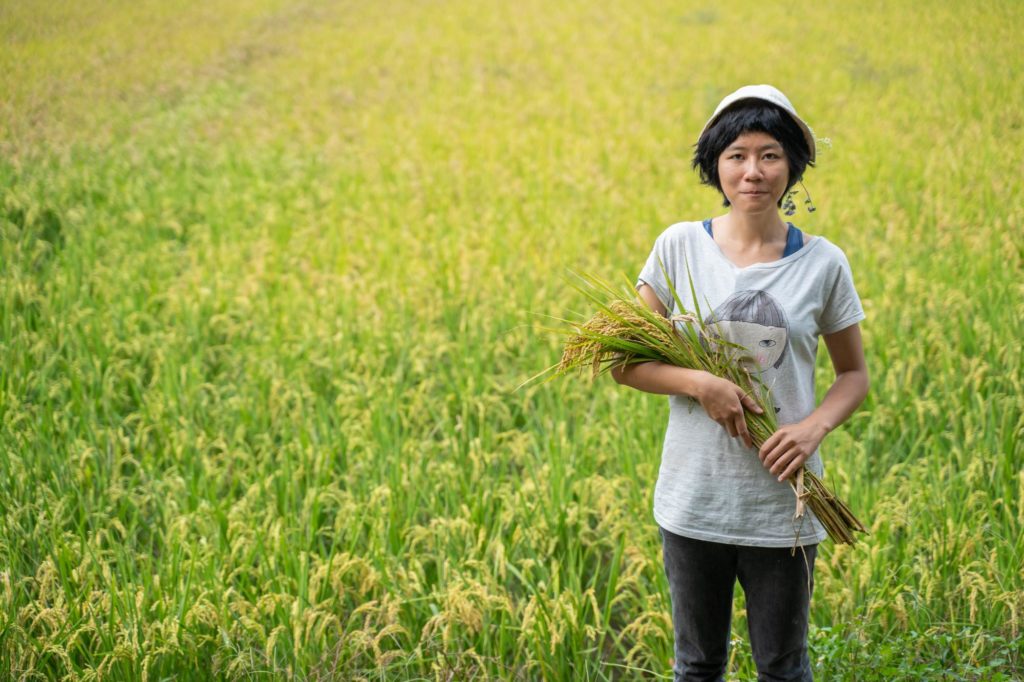
【Rice Agri-food education】 Rice Planting Process: Breeding, Ploughing, Transplanting, Management, Field Drying, Harvesting
內容目錄
Toggle1.育苗 Breeding
有人說「培育出好的秧苗,是成功種稻的一半。」由此可見,培育秧苗在水稻栽培中扮演很重要的角色。通常從買稻苗到插秧、收成,大約要 120 天左右的時間,但如果農夫要自己育苗,要再多花 60 天的時間,其實是一件辛苦的事。
有些農夫會直接買稻苗來耕種,而有些堅持自然農法的農夫會選擇自己育苗,這樣就能避免稻苗在育苗場的育苗過程中,被施用了農藥或肥料。而且從當地風土裡成長的水稻,孕育出來的是更強壯、更合適在地的秧苗。
Some people say that “cultivating good seedlings is half of successful rice cultivation.” It can be seen that cultivating seedlings plays an important role in rice cultivation. Usually, it takes about 120 days from buying rice seedlings to transplanting and harvesting, but if the farmer wants to raise the seedlings by himself, it will take another 60 days, which is actually a hard job.
Some farmers will directly buy rice seedlings for cultivation, while some farmers who adhere to natural farming methods will choose to raise their own seedlings, so as to avoid the rice seedlings being applied with pesticides or fertilizers in the process of raising seedlings. Besides, Rice grown in the local terroir produces seedlings that are stronger and more suitable for the ground.
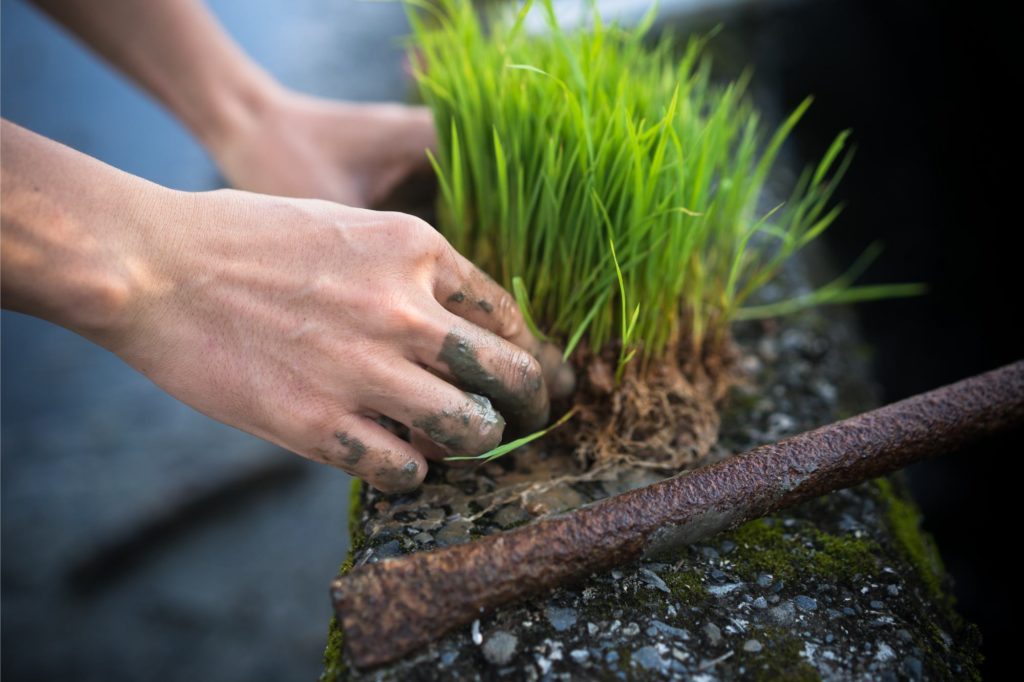
在育苗過程中,非常考驗農人的技術和耐心,我們來看看育苗的 5 個主要步驟吧:
- 留種:在當期稻作收割以後,就要挑選一些結實飽滿的稻榖,留作下一期的穀種。
- 篩種:在留下的穀種中,用「鹽水選種」的方式,選出最飽滿的稻穀。鹽水調製方法,是以10公斤的清水加入2.5公斤的食鹽,視食鹽的品質增減,調成比重1.13的鹽水。接著把稻穀放入鹽水裡,浮在水面上的撈掉,沉在水底的就是我們要的強壯好種。有農夫分享,可以 10公斤的種子,篩減出 1/3 到 1/2 最優秀的種子,留下來育種。
- 殺菌:把這些篩選出來最優秀的稻穀,用 60 °C 的水浸泡 7 分鐘,幫種子殺菌,因為種子身上攜帶的某些細菌可能會抑制發芽,所以我們必須把細菌燙死,確保種子發育過程中不會染病,可以健康順利地發芽。
- 浸種:為了讓水稻種子同時發芽,把種子裝袋以後,將稻種放進 10- 15 ° 的冷水裡浸泡 10- 20 天。
- 苗盤:將發芽的穀種放到鋪上土壤的苗盤,大約經過 50- 55 天的時間,秧苗就可以長成,就可以準備插秧囉!
In the process of raising seedlings, the skills and patience of farmers are very tested. Let’s take a look at the 5 main steps of raising seedlings:
- Reservation of seeds: After the rice crop of the current period is harvested, it is necessary to select some sturdy and full rice grains and reserve them as the grain seeds of the next period.
- Screening seeds: Among the remaining grain seeds, the most plump rice is selected by the method of “salt selection”. The salt water preparation method is to add 2.5 kg of table salt to 10 kg of clear water, depending on the quality of the salt, adjust it to a salt water with a specific gravity of 1.13. Then put the rice into the salt water, and remove the one that floats on the water surface. The one that sinks to the bottom is the strong and good seed we want. Some farmers share the following information: You can use 10 kilograms of seeds, select 1/3 to 1/2 of the best seeds, and keep them for breeding.
- Sterilization: Select the best rice grains, soak them in 60 °C water for 7 minutes to sterilize the seeds, because some bacteria carried on the seeds may inhibit germination, so we must scald the bacteria to ensure that they are scalded to death. We want to ensure that the seeds are not diseased during development and can germinate healthily and smoothly.
- Soaking the seeds: In order to make the rice seeds germinate at the same time, after bagging the seeds, soak the rice seeds in cold water at 10-15° for 10-20 days.
- Seedling tray: Put the germinated grain seeds on the soil-covered seedling tray. After about 50-55 days, the seedlings can grow and you can prepare for transplanting.
2.打田 Ploughing the field
農夫先將田中的泥土做翻覆再弄平整的動作。農夫在種米之前,會先打田,打田的目的一方面是要將稻田上的有機質打到土壤裡,也藉由翻動土壤,讓底下的泥土也可以和表層的泥土互換一下。另一方面,打田可以把泥土搗鬆,讓田裡的泥土不會硬硬的,讓稻子更容易生長。通常在農夫種稻子以前,會進行 3次的打田, 每一次的打田,都有不同的目的與功能。
The farmers first overturns the soil in the field and then smooth it out. Before planting rice, the farmers will first plough the fields. The purpose of ploughing is to knock the organic matter from the paddy fields into the soil, and to plough the soil so that the soil underneath can be exchanged with the soil on the surface. On the other hand, pounding the field can loosen the soil, so that the soil in the field will not be hard, making it easier for rice to grow. Usually, before a farmer grows rice, he will plough the fields three times, and each time for a different purpose and function.

3.插秧Rice transplanting
田地準備好以後,就可以用插秧機,將秧苗插到土中。通常 2-4 支秧苗合為一株,以 15 -20 公分的間隔來插秧,而插秧後的行株距則為 30 公分左右,剛好可以容納一個人步行通過。
After the field is ready, the rice transplanter can be used to insert the seedlings into the soil. Usually 2-4 seedlings are combined into one set, and the seedlings are transplanted at intervals of 15-20 cm, and the row spacing after transplanting is about 30 cm, which is just enough for one person to walk through.

4.日常田間管理 Daily field management
插秧後就要做田間管理啦,包括灌水、排水、追肥、除草、防治害蟲等等。
Field management should be done after transplanting, including irrigation, drainage, top dressing, weeding, pest control and so on.

5.曬田 Drying fields
很多人以為水田會永遠都有水,其實必須配合稻米生長狀況來調整水深。通常會在分蘗期最後,把田裡的水放乾,讓氧氣進入土壤中,保持根部健康。
Many people think that paddy fields will always have water, but in fact, the water depth must be adjusted according to the growing conditions of rice. Usually at the end of the tillering period, the field is drained to allow oxygen to enter the soil and keep the roots healthy.
6.收成 Harvest
接著就等田裡呈現一片金黃色,便可以請收割機來收割稻浪啦!
Then, when the fields are golden yellow, you can call the harvester to harvest the rice.

【米雙語食農教育】系列文章 Rice Agri-food education: Series of Articles
歡迎註明出處並轉載、分享,也歡迎預約雙語米食文化體驗課程喔!
Welcome to indicate the source and share the articles, and also welcome to book a rice culture experience tour with us!
- 【米雙語食農教育】台灣稻作簡史1:新石器時代、荷治時期、清領時期
【Rice Agri-food education】A Brief History of Rice Farming in Taiwan 1: Neolithic Age, Hezhi Period, and Requesting Period - 【雙語米食農教育】台灣稻作簡史2:日本統治時期
【Rice Agri-food education】A Brief History of Rice Farming in Taiwan 2: Japanese Occupation Period - 【雙語米食農教育】台灣稻作簡史3:國民政府遷台時期、加入WTO、近年稻作
【Rice Agri-food education】A Brief History of Rice Farming in Taiwan 3: Kuomintangs Retreat, WTO, Recent Years - 【雙語米食農教育】台灣水稻、南投稻作、埔里稻米種植現況
【Rice Agri-food education】Status of Rice Planting in Taiwan, Nantou and Rice Planting in Puli - 【米雙語食農教育】水稻種植流程:育苗、打田、插秧、田間管理、曬田、收成
【Rice Agri-food education】 Rice Planting Process: Breeding, Ploughing, Transplanting, Management, Field Drying, Harvesting - 【米雙語食農教育】為什麼水稻比較不會有連作障礙:禾本科植物與水田特性
【Rice Agri-food education】 Why there is less continuous cropping obstacle in rice: Poaceae and paddy field characteristics - 【米雙語食農教育】適合水稻的土地和氣候環境、埔里種植環境
【Rice Agri-Food Education】Land and Climatic Environment Suitable for Rice, Planting Environment in Puli - 【米雙語食農教育】水稻的一生&台灣二期稻作
【Rice Agri-Food Education】Rices life & The Two Stage of Rice Harvesting in Taiwan - 【米雙語食農教育】水田的8個重要功能:環境保護與文化傳承
【Rice Agri-Food Education】8 Important Functions of Paddy Fields: Environmental Protection and Cultural Heritage - 【米雙語食農教育】稻米的4個種類&決定米口感的因素
【Rice Agri-Food Education】4 types of rice & factors that determine the taste of rice - 【米雙語食農教育】台灣9個必吃米品種,你都吃過了嗎?
【Rice Agri-Food Education】9 Popular, Must-Try Rice Varieties In Taiwan
